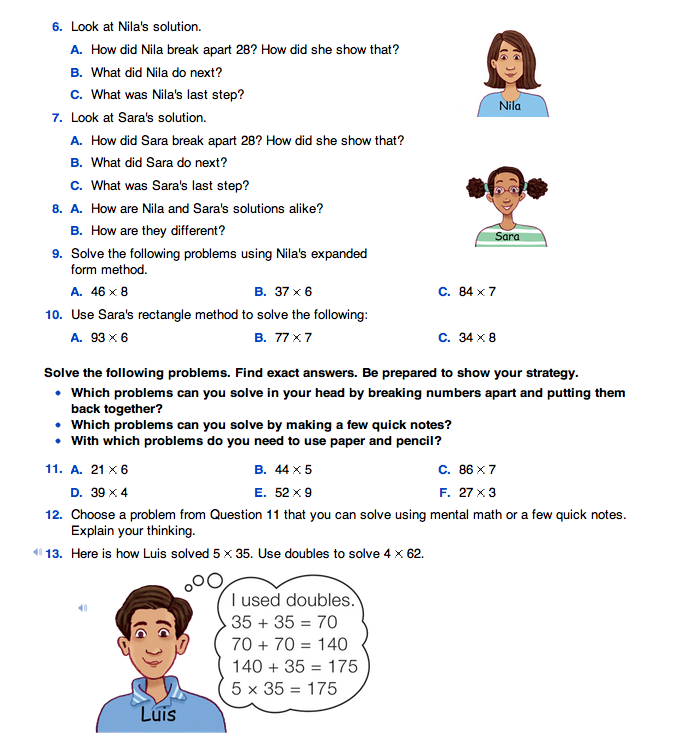Multiplication at the Zoo
Est. Class Sessions: 2Developing the Lesson
Part 2. Using Rectangles and Expanded Form to Multiply
Ask students to study Nila's and Sara's methods for multiplying 28 × 7 shown before Question 6 in the Student Guide. Nila used expanded form as shown in Figure 7 and Sara used rectangles to show how she broke 28 apart into tens and ones as shown in Figure 8. The use of these methods supports students' understanding of the all-partials and compact methods that will be taught in Lesson 9.
Use Questions 6–7 in the Student Guide to discuss the methods with the class. You can ask a student to play the part of Nila and another to play the part of Sara and have them explain each step in their strategies. Question 8 asks students to compare the two methods. Have students point to the numbers and explain how each connects to the problem. Being able to make connections among representations is an indication of student understanding, so these questions can be used as a quick assessment of students' conceptual knowledge of multiplication.
Ask:
Have two volunteers add examples of expanded form and using rectangles to the methods on chart paper displayed in the room. Students complete Questions 9 and 10 to practice each method.














